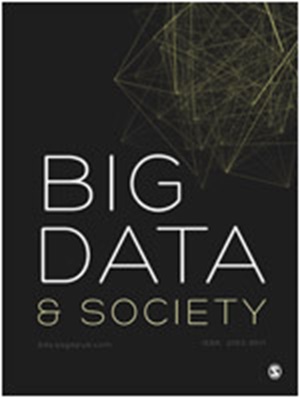曲面和子层级仇恨
IF 5.9
1区 社会学
Q1 SOCIAL SCIENCES, INTERDISCIPLINARY
引用次数: 0
摘要
从表面上看,当代的“另类科技”平台似乎比传统的仇恨庇护所更温和。然而,同样明显的是,以厌女症、白人至上主义和仇外心理为形式的恶毒仇恨并没有消失。为了探讨这种紧张关系,本文将两种形式的仇恨概念化:表面的“仇恨”(高度可见且易于获取的适度内容)和次级仇恨(更边缘、更不易辨别的明确内容)。这些术语可以通过查看Rumble上的几个病毒式视频来说明。这种结对机制解释了另类技术平台如何同时具有可访问性和极端性。分层仇恨具有战略意义,可以提高网络社区的吸引力和持久性。认识到这种危险的动态是采取干预措施应对这种动态的关键。本文章由计算机程序翻译,如有差异,请以英文原文为准。
Surface and Sublevel Hate
On the face of it, contemporary “alt-tech” platforms appear more moderate than legacy hate havens. Yet it's also clear that virulent hate in the form of misogyny, white supremacy, and xenophobia has not disappeared. Probing this tension, this article conceptualizes two forms of hate: Surface “Hate” (moderate content that is highly visible and easily accessible) and Sublevel Hate (explicit content that is more marginal and less discernible). These terms are illustrated by examining several viral videos on Rumble. This twinned mechanism explains how alt-tech platforms can be both accessible and extreme at the same time. Stratified hate is strategic, heightening the appeal and durability of online communities. Recognizing this dangerous dynamic is key for interventions seeking to counter it.
求助全文
通过发布文献求助,成功后即可免费获取论文全文。
去求助
来源期刊

Big Data & Society
SOCIAL SCIENCES, INTERDISCIPLINARY-
CiteScore
10.90
自引率
10.60%
发文量
59
审稿时长
11 weeks
期刊介绍:
Big Data & Society (BD&S) is an open access, peer-reviewed scholarly journal that publishes interdisciplinary work principally in the social sciences, humanities, and computing and their intersections with the arts and natural sciences. The journal focuses on the implications of Big Data for societies and aims to connect debates about Big Data practices and their effects on various sectors such as academia, social life, industry, business, and government.
BD&S considers Big Data as an emerging field of practices, not solely defined by but generative of unique data qualities such as high volume, granularity, data linking, and mining. The journal pays attention to digital content generated both online and offline, encompassing social media, search engines, closed networks (e.g., commercial or government transactions), and open networks like digital archives, open government, and crowdsourced data. Rather than providing a fixed definition of Big Data, BD&S encourages interdisciplinary inquiries, debates, and studies on various topics and themes related to Big Data practices.
BD&S seeks contributions that analyze Big Data practices, involve empirical engagements and experiments with innovative methods, and reflect on the consequences of these practices for the representation, realization, and governance of societies. As a digital-only journal, BD&S's platform can accommodate multimedia formats such as complex images, dynamic visualizations, videos, and audio content. The contents of the journal encompass peer-reviewed research articles, colloquia, bookcasts, think pieces, state-of-the-art methods, and work by early career researchers.
 求助内容:
求助内容: 应助结果提醒方式:
应助结果提醒方式:


